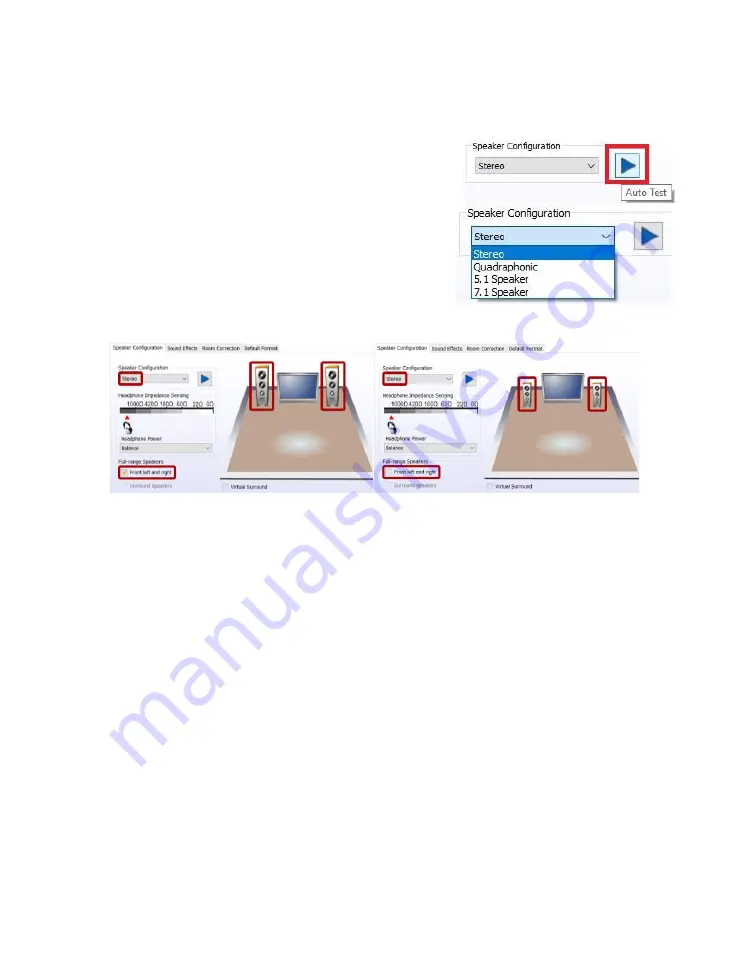
EVGA Z590 FTW WIFI (121-RL-E597)
- 110 -
The “Audio Test” button will be present for all
speaker configurations, and serves the same function
in all speaker iterations.
Pressing the “Auto Test” button will play the same
sound file out of each speaker that should be
present, based on the configuration option you
selected. As the sound test plays, an animation will
highlight the speaker the sound should be coming
from, this will help to ensure that the speakers are
connected correctly and oriented correctly, as well.
In the lower left, there is a pair of checkboxes labeled under “Full-Range Speakers.”
Full-range speakers are designed using drivers that can independently output audio
across a wide frequency response of (20Hz-20,000Hz +/- 3dB) at the same volume
level. When this setting is enabled, Windows will disable its software crossover settings
and send the full frequency range to the speakers, whereupon the speakers will engage
its own hardware crossover filters to appropriately direct audio to the individual drivers.
If your speakers are not full-range, they will not have necessary hardware components to
play low frequencies, nor are they designed for that purpose. When the full-range option
is unchecked, the Audio Manager will instead send the full signal out using crossover
settings, available on 5.1/7.1 by selecting the Bass Management option. This sort of
signal will send out the full audio frequency such that the majority of the frequency will
go to the speakers, but direct the low frequencies to a subwoofer. This way, you’ll still
get the same sound, but you must select the correct options.
To determine if your speakers are full-range or not, you must look at the minimum
frequency response of your speakers. The concern is not the high-end of the frequency
response, but rather the low-end. As noted above, if your speakers are not rated for a
minimum of 20Hz, then they are not full-range speakers. Here are some considerations:















































